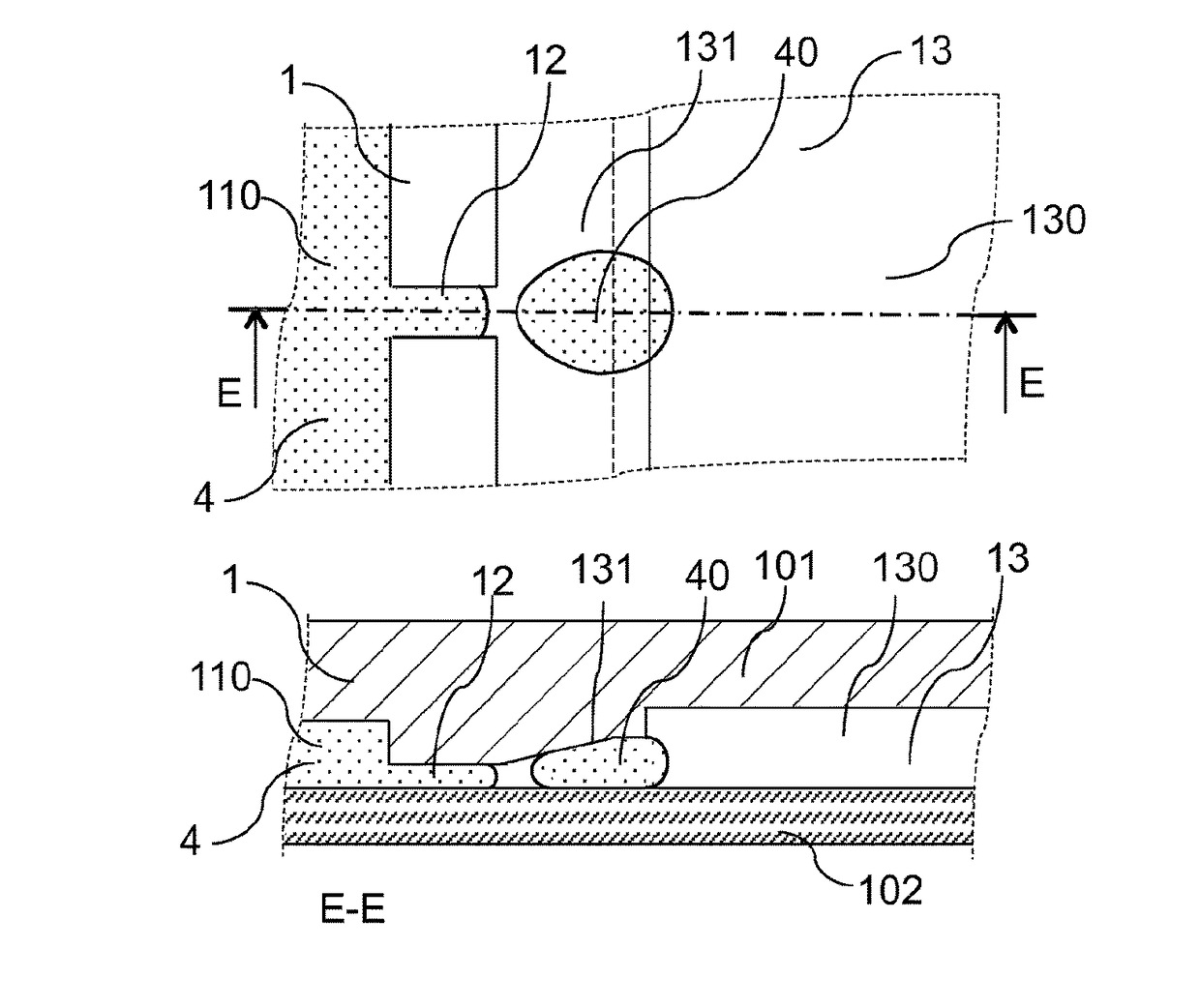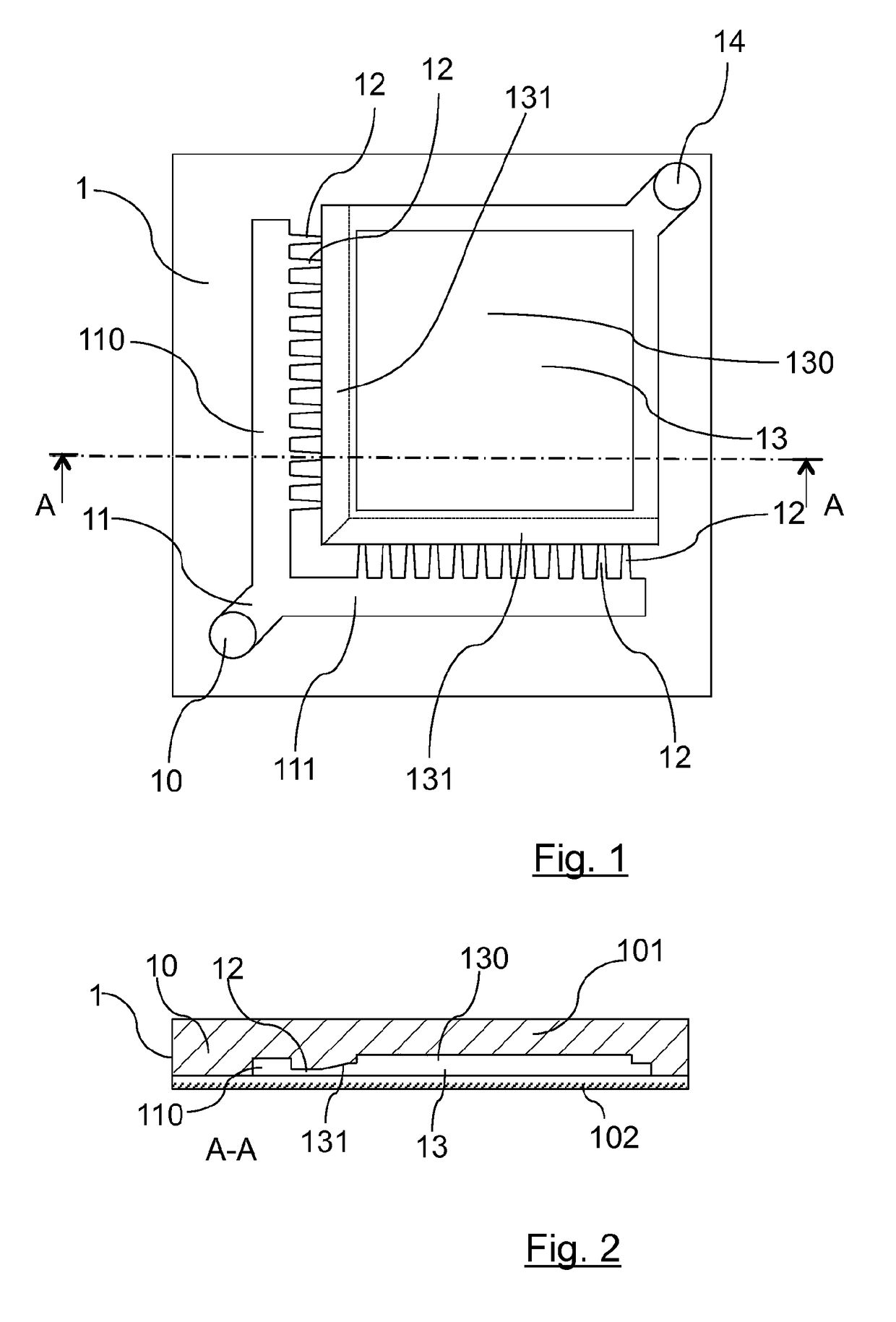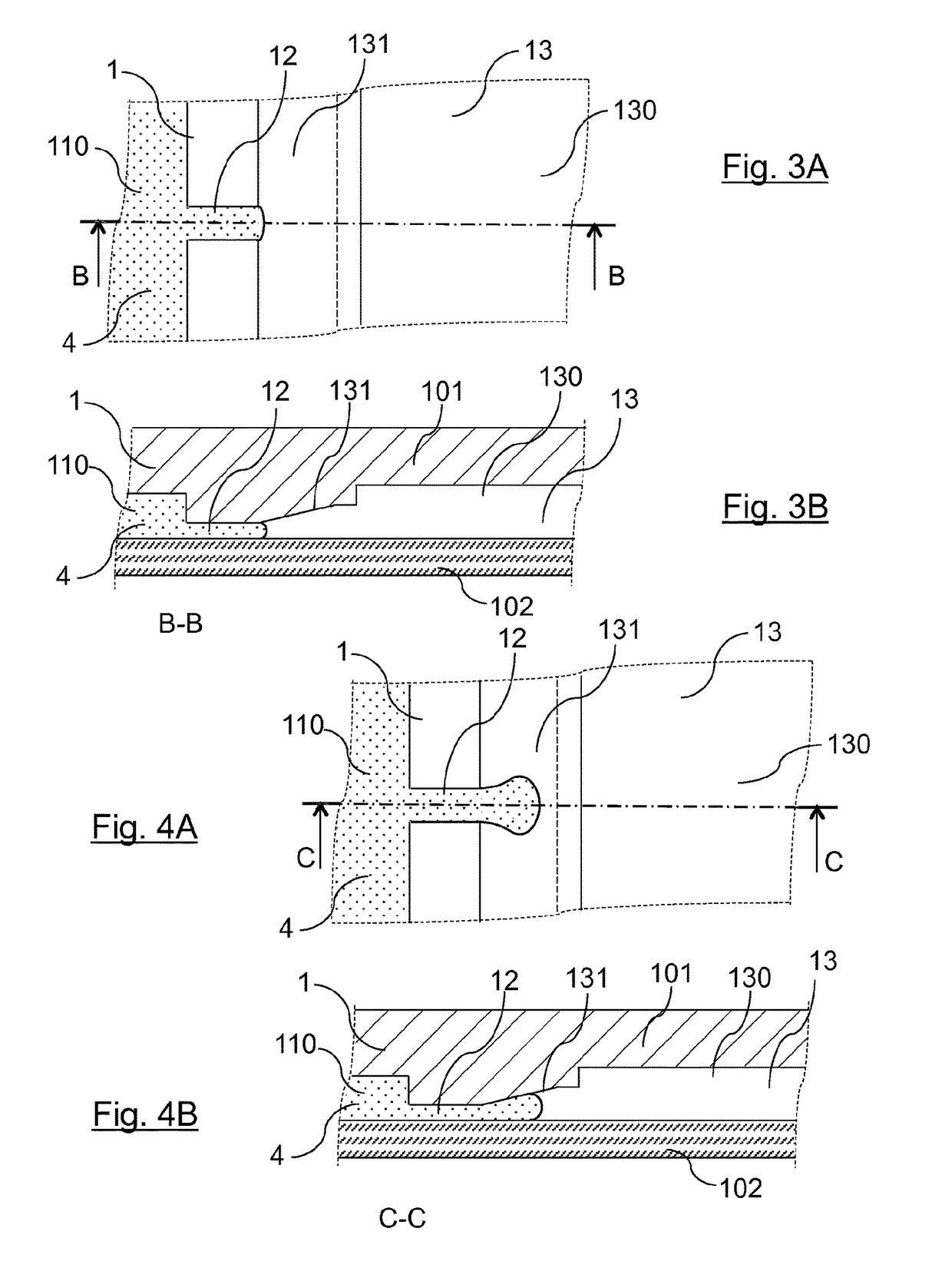Microfluidic process for treating and analysing a solution containing a biological material and corresponding microfluidic circuit
a microfluidic and biological material technology, applied in the field of microfluidic process, can solve the problems of unsuitable size, long success rate, expensive, etc., and achieve the effect of simple and more effectiv
- Summary
- Abstract
- Description
- Claims
- Application Information
AI Technical Summary
Benefits of technology
Problems solved by technology
Method used
Image
Examples
Embodiment Construction
[0019]These aims, along with others which will emerge more clearly hereinafter, are achieved using a microfluidic process for treating and analysing a solution containing a biological material, the process comprising, according to the invention, the following steps:[0020]i. introducing the solution into microchannels of a microfluidic circuit;[0021]ii. detaching drops of the solution in a carrier fluid, caused by the divergence of the microchannel walls, coupled with the effects of the surface tension of the solution;[0022]iii. moving at least a portion of the drops in the carrier fluid to at least one drop storage zone in the microfluidic circuit, caused by the divergence of the microchannel walls, coupled with the effects of the surface tension of the drops;[0023]iv. applying a treatment to the drops situated in the storage zone(s);[0024]v. analysing the drops situated in the storage zone(s).
[0025]This process advantageously enables the reaction induced by the treatment to take pl...
PUM
| Property | Measurement | Unit |
|---|---|---|
| volume | aaaaa | aaaaa |
| depth | aaaaa | aaaaa |
| depth | aaaaa | aaaaa |
Abstract
Description
Claims
Application Information
 Login to View More
Login to View More - R&D
- Intellectual Property
- Life Sciences
- Materials
- Tech Scout
- Unparalleled Data Quality
- Higher Quality Content
- 60% Fewer Hallucinations
Browse by: Latest US Patents, China's latest patents, Technical Efficacy Thesaurus, Application Domain, Technology Topic, Popular Technical Reports.
© 2025 PatSnap. All rights reserved.Legal|Privacy policy|Modern Slavery Act Transparency Statement|Sitemap|About US| Contact US: help@patsnap.com



